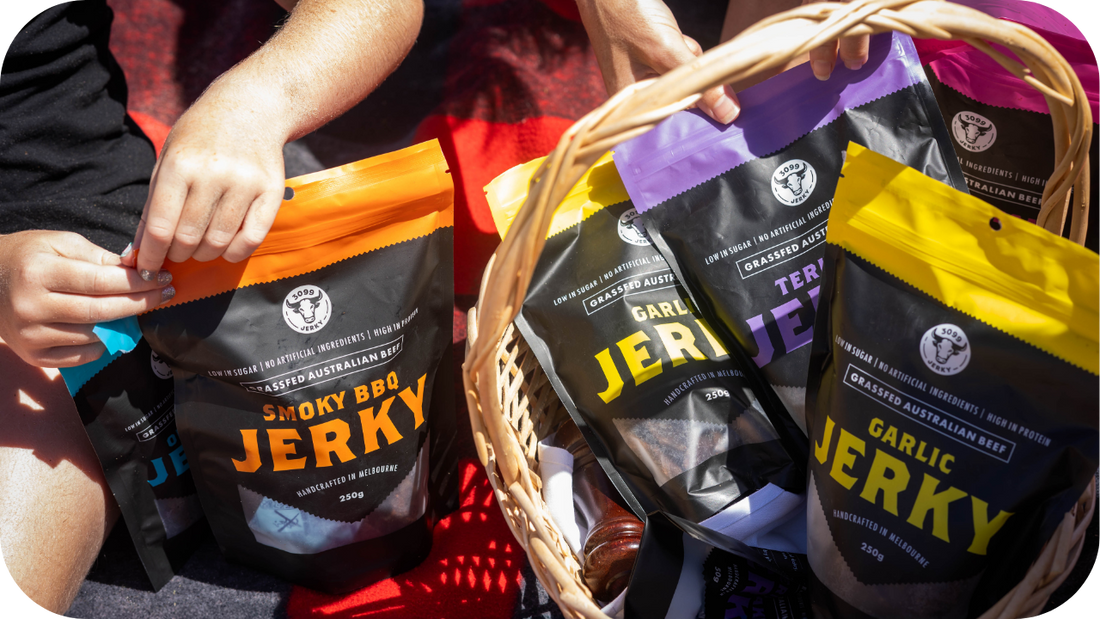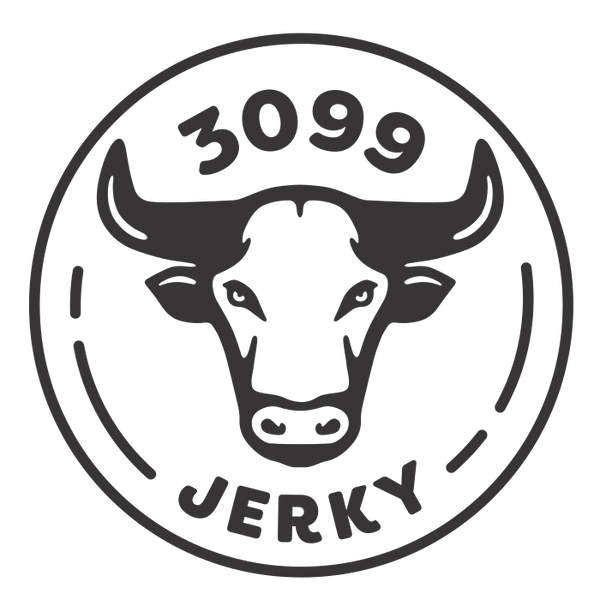
Sustainable Jerky Packaging: How 3099 Jerky Reduces Environmental Impact
Share
The food industry creates over 141 million tonnes of packaging waste each year.
That’s a mountain of wrappers, and jerky plays a part. Most packaging isn’t sustainable and ends up in a landfill.
This article dives into how 3099 Jerky is tackling this issue head-on. We’ll examine the problems, their solutions, and how they lead the way in Australia’s sustainable jerky packaging.
The Growing Need for Sustainable Packaging in the Food Industry
The food industry is one of the largest contributors to global packaging waste. Most snacks, including jerky, are wrapped in plastic that ends up in landfills or oceans. These materials can take hundreds of years to break down, causing harm to wildlife and the environment.
Consumers now want products that are good for them and the planet. They are looking for eco-friendly packaging that can be recycled, reused, or composted. Brands that use less plastic and reduce their carbon footprint are becoming more popular.
For the jerky industry, this means finding ways to keep the product fresh while using environmentally friendly packaging.
Sustainable packaging not only helps the environment but also builds trust with customers. It shows that a brand is serious about its impact. In a world where climate change and pollution are big concerns, moving towards sustainable packaging solutions is no longer a trend; it’s a must.
Companies like 3099 Jerky are leading this change, proving that you can enjoy great taste while making better choices for the Earth.
3099 Jerky's Sustainable Packaging Initiatives: The "How"
While many jerky brands still rely on plastic-heavy packaging, 3099 Jerky is working to reduce its environmental footprint through more conscious packaging choices. The company understands that great taste should not come at the planet’s expense.
Although specific details are limited publicly, signs point to 3099 Jerky exploring eco-friendly packaging solutions that align with growing consumer demand for sustainability.
Most jerky needs airtight, moisture-resistant packaging to stay fresh. However, 3099 Jerky is believed to be working on ways to balance product quality with environmentally friendly packaging. This may include using recyclable or compostable materials and reducing excess plastic in their pouches and labels.
Their move supports a broader trend in the food industry where more brands are cutting down on waste and exploring sustainable packaging for food products.
As the market shifts, 3099 Jerky’s commitment to sustainability helps build trust with customers who care about the environment.
The Environmental Impact of 3099 Jerky's Efforts
In a time where packaging waste and carbon emissions are significant concerns, the brand is stepping up to minimise its footprint. From rethinking packaging materials to promoting responsible disposal, 3099 Jerky’s actions show that even small snack companies can have a big environmental impact. Let’s take a closer look at how their efforts are helping protect the environment.
1. Reduced Plastic Waste through Eco-Friendly Packaging
3099 Jerky is taking steps to lower its reliance on traditional plastic by using more recyclable and low-waste packaging options. This shift significantly reduces the amount of single-use plastic in landfills or pollutes the ocean.
While most jerky packaging is plastic-heavy to preserve freshness, 3099 Jerky aims to maintain shelf life using smarter, lighter, and more sustainable packaging materials. This reduces plastic pollution and educates consumers on the value of choosing environmentally friendly snacks.
2. Lower Carbon Footprint from Lightweight Shipping Materials
Using lightweight and minimal packaging, 3099 Jerky reduces its shipping-related carbon emissions. Heavy packaging means more fuel is needed during transport, which increases the brand’s carbon footprint.
Switching to leaner packaging materials helps reduce the overall weight per shipment, cutting back on fuel consumption and greenhouse gas output.
This small but impactful change makes the food industry more climate-friendly, proving that even small brands can lead with sustainability while still delivering a high-quality product.
3. Improved Packaging Disposal through Clear Consumer Guidance
One of 3099 Jerky’s environmental strengths lies in encouraging proper disposal habits. Clear labelling on their packaging helps customers understand how to recycle or compost what’s left after snacking. This reduces the chance of packaging being wrongly thrown into general waste bins, which can cause contamination in recycling systems.
By guiding consumers, 3099 Jerky ensures its efforts don’t stop at the point of sale. Instead, they extend into post-consumption behaviour, making sustainable packaging more effective and creating a culture of responsible snacking.
The Packaging Problem: Challenges in Jerky Preservation
The challenge is that most of this protective packaging is made from plastic, which isn’t kind to the environment. For brands like 3099 Jerky, finding a balance between shelf life and sustainability is one of the biggest hurdles in reducing packaging waste.
-
Long shelf life required – Jerky must stay fresh for months, often without refrigeration, demanding strong, airtight packaging.
-
Moisture and oxygen barriers – Exposure to air or moisture can spoil jerky quickly. Most packaging relies on non-recyclable plastic to block this.
-
Light protection – UV light can affect taste, colour, and quality. Most jerky packs are designed to block light, but these materials are rarely eco-friendly.
-
Food safety concerns – Preserving jerky safely without chemicals means the packaging must do more work, limiting bacteria growth and spoilage.
-
Durability for shipping and storage – Jerky is sold online and in stores. The packaging must survive transport, handling, and heat without tearing or leaking.
- Balancing eco goals with performance – Sustainable materials often don’t offer the same strength, barrier protection, or shelf stability as plastics, making switching hard.
Eco-Friendly Packaging Materials Used by 3099 Jerky
While specific details about 3099 Jerky's sustainable packaging initiatives are not publicly available, the broader jerky industry is increasingly adopting eco-friendly packaging materials to reduce environmental impact. Some of these materials include:
-
Plant-Based Plastics: Derived from renewable resources like sugarcane or cornstarch, these bioplastics offer similar protective qualities as traditional plastics but are more sustainable. For instance, some companies produce beef jerky bags made from plant-based polyethylene (PE), reducing carbon footprints associated with packaging.
-
Compostable Films: These materials are designed to break down under composting conditions, leaving minimal environmental residue. They provide necessary barriers against moisture and oxygen, ensuring product freshness while being environmentally responsible.
-
Recyclable Materials: Utilizing packaging that can be recycled helps minimize waste. Options include certain plastics labeled for recycling and paper-based materials, provided they meet food safety standards and are appropriately processed.
Adopting such materials presents challenges, including balancing product preservation with environmental responsibility. However, as sustainable packaging technologies advance, more companies find viable solutions that align with consumer expectations and ecological considerations.
Conclusion
3099 Jerky is proving that great taste and sustainability can go hand in hand. Using eco-friendly packaging and reducing waste, they're helping protect the planet, one pack at a time. Want to make a better snacking choice? Grab a bag of 3099 Jerky and enjoy bold flavour with less environmental impact. Every bite supports a greener future.
